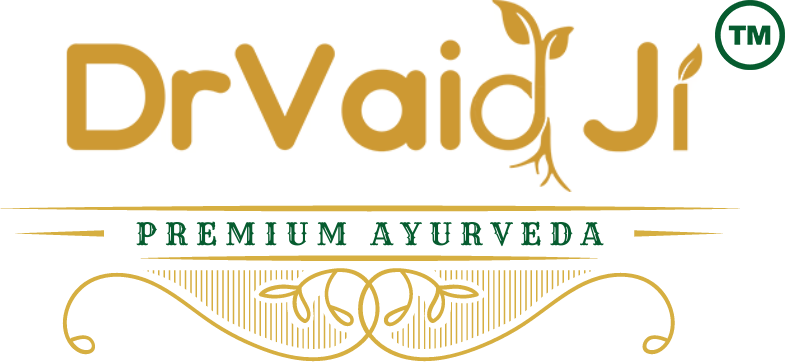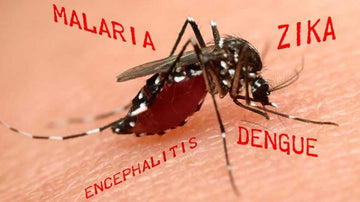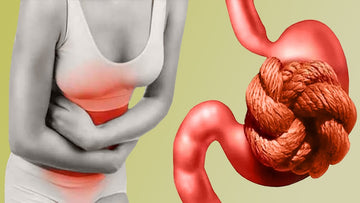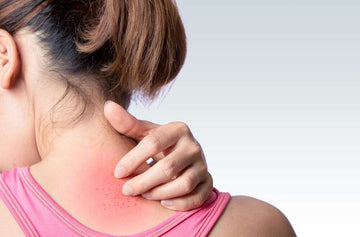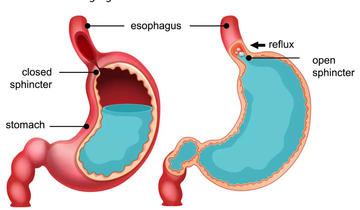
WHAT IS ATHEROSCHLEROSIS ?
- Atherosclerosis is a medical condition characterized by the buildup of plaque inside arteries. This plaque is made up of substances like cholesterol, fat and calcium. Over time, the plaque hardens and narrows the arteries, reducing blood flow. This can lead to various cardiovascular problems such as heart disease, stroke and peripheral artery disease. Atherosclerosis is a common cause of these conditions and can be influenced by factors like diet, smoking and genetics.
CAUSES OF ATHEROSCLEROSIS :
- Atherosclerosis is a complex process with multiple contributing factors. Some of the primary causes and risk factors include:
- High Cholesterol: Elevated levels of low-density lipoprotein (LDL) cholesterol in the blood can lead to the accumulation of plaque in the arteries.
- High Blood Pressure: Hypertension can damage artery walls, making them more susceptible to plaque buildup.
- Smoking: Smoking not only damages the arteries but also lowers high-density lipoprotein (HDL) cholesterol, which helps remove cholesterol from the bloodstream.
- Diabetes: People with diabetes are at a higher risk of atherosclerosis due to elevated blood sugar levels, which can damage blood vessels.
- Obesity: Excess body weight, particularly around the abdomen, can lead to high blood pressure, diabetes, and abnormal lipid levels, all of which contribute to atherosclerosis.
- Inactivity: A sedentary lifestyle can contribute to obesity and increase the risk of atherosclerosis.
- Poor Diet: A diet high in saturated and trans fats, as well as low in fruits and vegetables, can promote atherosclerosis.
- Family History: A family history of atherosclerosis or related conditions can increase the risk.
- Age and Gender: The risk of atherosclerosis increases with age, and men are generally at a higher risk than premenopausal women.
- Stress: Chronic stress may indirectly contribute to atherosclerosis through behaviors like overeating or smoking.
- Inflammation: Chronic inflammation in the body can contribute to the development of atherosclerosis.
SYMPTOMS OF ATHEROSCLEROSIS :
- Atherosclerosis often progresses silently over many years, and people may not experience symptoms until a significant blockage or a cardiovascular event occurs. When symptoms do occur, they can vary depending on which arteries are affected. Common symptoms and complications of atherosclerosis may include:
- Chest Pain (Angina): This is a common symptom when atherosclerosis affects the coronary arteries. It can manifest as chest pain or discomfort, often triggered by physical activity or emotional stress.
- Shortness of Breath: Reduced blood flow due to atherosclerosis in the arteries supplying the heart can lead to shortness of breath, especially during exertion.
- Leg Pain: Atherosclerosis in the arteries of the legs (peripheral artery disease) can cause pain, cramping, or weakness in the legs, especially during physical activity.
- Numbness or Weakness: Reduced blood flow to the brain can lead to symptoms like numbness, weakness, or difficulty speaking, which can be warning signs of a stroke.
- High Blood Pressure: Atherosclerosis in the arteries can lead to hypertension (high blood pressure), which may not cause noticeable symptoms but can increase the risk of heart disease and stroke.
- Sudden Cardiac Events: Atherosclerosis can lead to sudden cardiac events such as heart attacks or arrhythmias, which may cause symptoms like severe chest pain, shortness of breath, or loss of consciousness.
- Digestive Issues: Atherosclerosis affecting the arteries supplying the intestines can lead to abdominal pain after eating.
- Impotence: In men, atherosclerosis can affect blood flow to the genitals, leading to erectile dysfunction.
DIAGNOSIS OF ATHEROSCLEROSIS :
- The diagnosis of atherosclerosis typically involves a combination of medical history assessment, physical exams, and various diagnostic tests. Here are some common methods for diagnosing atherosclerosis:
- Medical History: Your healthcare provider will discuss your personal and family medical history, including risk factors like smoking, high blood pressure, diabetes, and high cholesterol.
- Physical Examination: A physical examination may reveal signs such as weak or absent pulses, bruits (abnormal sounds in the arteries), or other physical clues to atherosclerosis.
- Blood Tests: Blood tests can measure cholesterol levels, triglycerides, and other factors that may indicate an increased risk of atherosclerosis.
- Electrocardiogram (ECG or EKG): This test can record the electrical activity of the heart and identify irregularities or signs of a previous heart attack.
- Echocardiogram: An echocardiogram uses sound waves to create images of the heart and can reveal issues with the heart's valves or pumping function.
- Stress Tests: These tests assess how your heart responds to stress, often through exercise or medication. Abnormalities during stress testing can indicate atherosclerosis.
- Angiography: This involves injecting a contrast dye into the arteries and using X-rays to visualize blood flow and identify blockages.
- CT Angiography (CTA): A CT scan with contrast can create detailed images of the blood vessels to detect narrowing or blockages.
- Magnetic Resonance Angiography (MRA): MRA uses magnetic fields and radio waves to create images of the blood vessels and detect blockages or other issues.
- Carotid Ultrasound: This imaging technique assesses the carotid arteries in the neck to identify blockages or plaque buildup that could lead to stroke.
- Peripheral Arterial Disease (PAD) Tests: Specialized tests, like ankle-brachial index (ABI) or Doppler ultrasound, can diagnose atherosclerosis in the peripheral arteries.
AYURVEDIC MANAGEMENT OF ATHEROSCHLEROSIS
- Atheroschlerosis which is DHAMANIPRATICHAY in Ayurveda is a chronic illness that requires continuous medical care and management to prevent the risk of complications. In developed countries, the two leading causes of death, myocardial infarction and stroke each may directly result from an arterial system that has been slowly and progressively compromised by years of deterioration. The same thing is indicated by dhamanipratichaya. Heart is the main site of rasavaha srotas and ten dhamani are associated with it. Dhamani can be defined as the vessels which carry rasa dhatu and rakta dhatu, [essential nutrients and blood]. Pratichay can be defined as ‘atipuran’or coating within the vessels It is correlated as ‘sanga’, as a sroto dushti lakshan. Meda dhatu accumulates in the arteries, which is vimarga gamana of meda dhatu which is excess in body.
- As dhamanipratichay is a kapha related disease, protocol of kapha dosha chikitsa is important for its management. All the food ingredients which increase kapha dosha, can lead to blockages, if there is excess consumption. This includes sugar, curd, oil, ghee, cheese, butter, sweets, oil seeds etc. All food items which reduce kapha are important to prevent dhamanipratichay. Ginger, garlic, tvak [dalchini], guggulu, kamalnala kshara have been used for managing atherosclerosis.
CAC MANAGEMENT OF ATHEROSCHLEROSIS
ATHEROSCHCLEROSIS GO KIT
ALL PRODUCTS DESCRIPTION IN DETAIL:
- Garlic Capsule
This is an ayurvedic preparation which contains pure garlic extract (Allium sativum). The capsule helps in the reduction of deposition of dangerous cholesterol on the artery wall and helps in the prevention of heart diseases.
Recommended Dosage- Take 2 tablets twice daily with normal water.
- Active Plus Tablet
active plus Tablet is a pure herbo-mineral formulation prepared from best quality of herbs. This tablet is best for person mental and physical health, also helps to boost up the immunity. The herbal ingredients present in these tablets are used to maintain person’s health and refreshes the mind and body. These tablets improves digestion, eliminates constipation, stress, nourishes brain, acts as antioxidant, analgesic, anti-inflammatory, etc.
Recommended Dosage – Take 2 tablets twice daily with normal water.
- Detox Premium Powder
This ayurvedic formulation contains Moti pishti, Prawal pishti, Shukta pishti, Giloy satv, Kamdudha rasa, Jahar mohra, Akik pishti, Gandhak rasayan, Tal sindoor, Sudhyog tab, Shwet parpati, Yavakshaar, etc. This helps in clearing the body toxins, improves digestion, reduces stress and anxiety, act as an anti-hypertensive, anti-inflammatory, analgesic, etc.
Recommended Dosage – Take 1 sachet twice daily with normal water.
- Trikatu Syrup
Trikatu syrup is best in pacifying Vata and Kapha dosha, and improves respiratory functions, helps in digestion, removes impurities from the body, reduces risk of atherosclerosis, and treats skin infections. This syrup is a mixture of Black pepper (Piper nigrum), Ginger (Zingiber officinale), and Long pepper (Piper longum), which acts as an anti-inflammatory, anti-oxidants, etc.
Recommended Dosage – Take 2 tablespoonful twice daily.
- Cholesterol Care tablet
cholesterol care is pure herbo- mineral ayurvedic medicine which help to maintain healthy range of cholesterol levels. Its main function is to strengthen heart, have check on hypertension & rejuvenates the heart by regulating heart and control cholesterol level.
Recommended Dosage– Take 1 tablet twice daily.
- Herbal tea
Herbal tea relieves stress and anxiety, lower blood pressure, reduces infections, rejuvenates tissues, cures cough and cold, and removes impurities from the body. It is an ayurvedic preparation that consists of Arjun chal (Terminalia arjuna),Tejpatra (Cinnamomum tamala), Shunthi (Zingiber officinale), Mulethi (Glycyrrhiza glabra),Tulsi (Ocimum sanctum), Nagarmotha (Cyperus cariosus), Bharangi (Clerodendrum serratum), Kulanjan (Alpinia galanga), etc. The ingredients help in maintaining the blood circulation in the whole body.
Recommended Dosage-Take 2 cups of herbal tea twice daily.
